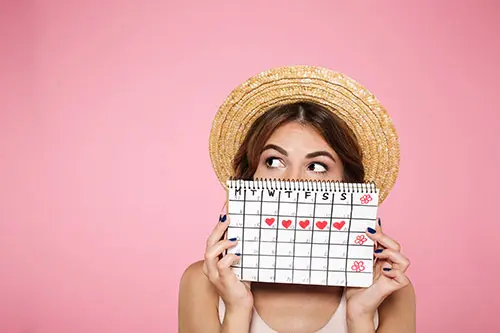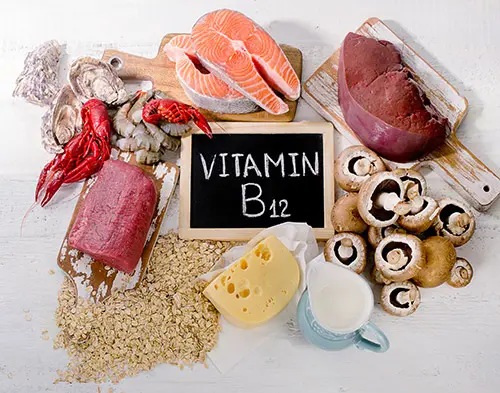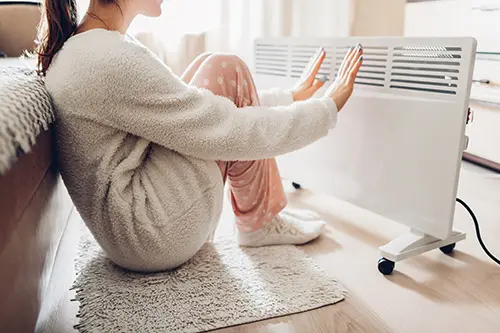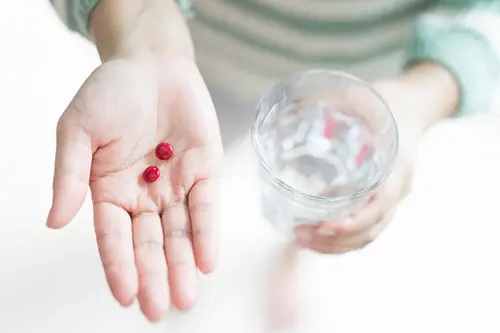Could I be anaemic? How to find out and what to do about it
Medical review by
Dr Alasdair Scott MBBS FRCS PhDLast updated
Key Article Takeaways
- Being "anaemic" means that your levels of haemoglobin are low.
- Women before menopause and people on plant-based diets are at risk of anaemia due to iron or vitamin deficiency.
- You can take our Quick and Easy Iron Deficiency Test today.
- If you’re at risk of nutrient deficiency, take our Iron, Vitamin D and B12 Deficiency Blood Test.
Do you feel weak and tired all the time? Is your skin paler than normal? Do you experience headaches or breathlessness? Have you ever asked yourself, “Could I be anaemic?”.
Besides draining symptoms impacting your day-to-day life, anaemia could possibly be a sign of an underlying medical condition. You can easily test yourself to find out if you're at-risk of being anaemic. Read on to understand what anaemia is, if you’re likely to have it, what the signs and symptoms are and how to test for it. Nobody wants to keep feeling run down all the time. We’re here to help you feel like you again.
What is anaemia?
First things first, what do we mean by anaemia?
Being anaemic means that you have a low level of haemoglobin. Haemoglobin is a protein in your blood that’s found inside your red blood cells. Haemoglobin carries the oxygen you breathe from your lungs to all the tissues and organs in your body. Oxygen is essential to produce energy and keeps the body functioning.
If you have lower haemoglobin than normal, it makes it harder for the body to get the oxygen it needs to function well. This is why people with anaemia can feel weak, tired and occasionally breathless. It’s no wonder - your body quite literally can’t get enough energy!
Are you likely to have anaemia?
Some people are more likely to develop anaemia than others. Women before the menopause, people eating a plant-based diet, like vegetarians and vegans, and people with long-standing illnesses such as inflammatory bowel disease or rheumatoid arthritis are all more likely to become anaemic.
Women before the menopause
The World Health Organisation estimated that around 30% of non-pregnant women were anaemic in 2019 - more than half a billion women worldwide1. Why are pre-menopausal women at risk of anaemia? One reason is because they lose blood during their monthly cycle. Blood contains iron which is essential for your body to make haemoglobin. There is a baseline daily requirement of iron which your body needs, with extra iron required when you have blood loss. Without this key building block your body can’t make enough haemoglobin and you can become anaemic. This type of anaemia is called iron-deficiency anaemia and women who have heavy periods are particularly likely to have this.
Losing blood is one reason why you might get iron deficiency anaemia. Another reason may be that you’re not getting enough iron in your diet. The NHS recommends that women eat 14.8mg of iron a day2. Red meat, beans, nuts, spinach and eggs are all examples of foods that are rich in iron. If women eat enough of these foods, they should be able to make up for the blood they lose in their monthly cycle.
But it's not just a case of what you eat you absorb. Haem iron from meat is more easily absorbed than non-haem iron from plant sources like spinach. From surveyed Brits, more women than men were following a plant-based, vegan or vegetarian diet3 and therefore won’t eat red meat which is particularly high in iron. This could put some women at even higher risk of anaemia and is where iron supplements could come in handy.
Other people who are on a plant-based diet are at risk of developing anaemia but it's not just due to a lack of iron. Let’s look at why that is.

People on a plant-based diet
Are you on a vegan or vegetarian - plant-based - diet? Not eating animal products means you may not be eating many food groups containing iron or vitamin B12. Iron and vitamin B12 have to come from what we eat. All of these nutrients are needed to make red blood cells and if you don’t get enough in your diet this can lead to low haemoglobin levels and anaemia.
Although there are plant-based sources of iron, they contain a form of iron called “non-haem” iron that is harder for your body to absorb than “haem” iron from meat and fish4. Furthermore, other compounds in many vegetables, such as polyphenols, can decrease iron absorption5. People who follow a plant-based diet therefore need to have a higher intake of dietary iron in order to absorb enough to meet their requirements6.
Folate (vitamin B9) is another essential nutrient which is found in many dark leafy greens, liver, beans and beetroot7. Folate is also added to some foods like bread and cereals to help people get enough. This means that most people on a plant-based diet do get enough folate. However, they are at risk of vitamin B12 deficiency. Animal products like meat, fish, eggs and dairy are rich in vitamin B12 as well as iron. In a recent study, 7% of vegetarians and 52% of vegans were vitamin B12 deficient8.
All told, people on a plant-based diet need to be very mindful of their diet to avoid anaemia. Vegetarians who eat dairy and eggs are much less likely to be B12 deficient than vegans. But even if you do eat some animal products you may not get enough iron or vitamin B12. For example, restrictive diets which cut out various food groups, such as dairy, could put you at a higher likelihood of developing vitamin deficiencies.

Are you having symptoms of anaemia?
Now that you know if you’re at a higher risk or not, the next thing to ask yourself is, “am I experiencing any symptoms of anaemia?”.
Firstly, it’s important to know that you can be anaemic without having any symptoms at all or perhaps just feeling a bit “off”. This is particularly common with mild anaemia.
If you do experience symptoms, the first thing you might notice is feeling tired and weak. You may feel drained of energy and just not have your usual “get up and go”. As anaemia becomes more severe, fatigue could be followed by frequent headaches or dizziness. Other people might tell you that you’re looking pale. As anaemia progresses, you could feel short of breath, particularly after light exercise like running for a bus, or even have heart flutters or palpitations.
If you’re only experiencing fatigue as a symptom, you can read our tiredness article here to help understand what could be causing it.

Can I test for anaemia and nutrient deficiency?
If you’ve read the above and realised that you’re in a group more prone to anaemia or are getting symptoms of anaemia, you’ll benefit from taking a blood test to find out. The best test to choose depends on whether you’re just “at-risk” or are actually experiencing anaemia symptoms.
Are you “at risk” of anaemia?
If you’re likely to develop a nutrient deficiency because of your diet or because you have heavy periods, you’re best off checking your iron and vitamin status. For example, if you don't eat much (or any) meat or fish or have heavy periods, you’re more likely to get iron-deficiency and we recommend checking your iron with our Quick and Easy Iron Deficiency Test.
If you follow a vegan or plant-based diet and don't eat any animal products, or if you don’t eat many eggs or dairy products, you’re also likely to develop B12 deficiency along with iron deficiency. We recommend checking your nutrient levels with our Iron, Vitamin D and B12 Deficiency Blood Test.
In general, while you’re in a group prone to these deficiencies, it’s sensible to check your nutrient levels every six months or so. Our doctors will look through your results and give you specific advice if anything’s not where it should be.
This is an easy finger-prick blood tests that you can take at home and get results in a day or two. Our doctors will explain exactly what changes you need to make to your diet, lifestyle or supplements to help you get on top of your health. Testing is also useful to monitor and manage your recovery to check if treatment is working, e.g. whether taking supplements is restoring your nutrient levels to normal.
Are you getting anaemia symptoms?
If you are experiencing anaemia symptoms, or if you know you are deficient in nutrients like iron or B12, you’re best off checking your haemoglobin level with a "Full Blood Count". It's difficult to do this test accurately with an at home finger-prick test so we recommend seeing your GP to get it done with them.
What if I am at risk of anaemia?
So, your results are back and you’re got nutrient deficiencies that put you at risk of anaemia. What next?
- Increase your intake: if your iron or vitamin B12 levels are low, you could try eating more foods that contain these nutrients. Getting them naturally through your diet may help you feel better. We can give you specific advice on how to tailor your diet to maximise your nutrient intake.
- Take supplements: if you’re on a restrictive diet, are plant-based or have more severe anaemia caused by nutrient deficiency, you could take supplements to boost your levels. Iron and vitamin B12 can be supplemented in your diet.
- Treat any underlying causes: if you have heavy periods you might want to discuss this with your GP. There are various treatments which could ease your period symptoms along with causing you to lose less blood each month.

Can I check my iron and B12 levels today?
At Selph, we’re here to help you on your journey to better health. Wondering if you could be anaemic? Check your iron levels with our Quick and Easy Iron Deficiency Test. Interested in checking your iron and vitamin B12 levels? You can order your Iron, Vitamin D and B12 Deficiency Blood Test today.
Get tips on better health
Sign up to our emails on the better way to better health.
We'll keep you up-to-date with the latest research, expert articles and new ways to get more years of better health.


